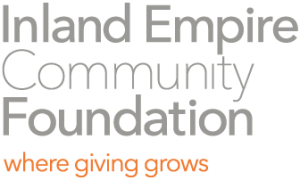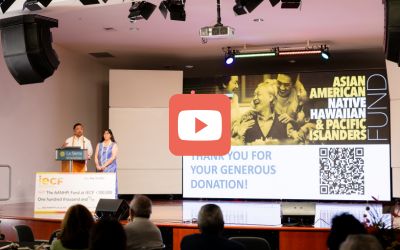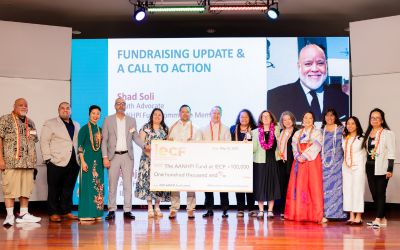
The AANHPI Fund committee celebrates raising $100,000
Building a Bridge to Greater Service
A newly formed signature fund from Inland Empire Community Foundation (IECF) is building a bridge to greater serve one of the region’s fastest-growing communities.
IECF Board Member Ben Nate has been tapped as the inaugural chair of IECF’s new Asian American, Native Hawaiian, and Pacific Islander (AANHPI) Fund. A proud Inland Empire resident, public servant, husband, father, and grandfather, Nate’s role will ensure AANHPI communities in the Inland Empire are seen, supported, and included in the future the organization is building.
About the Fund
The AANHPI Fund was established in 2024 to empower the lives and futures of Asian American, Native Hawaiian and Pacific Islanders (AANHPI) in the Inland Empire through community philanthropy, investment in educational excellence, leadership development.
“From 2010 to 2020, the region’s population grew by 9 percent, but the Asian American population grew by over 36 percent,” said Theresa Han Savage, AANHPI Fund Committee Member. “It just shows how many Asian Americans are coming to Riverside and San Bernardino.”
Fund Launch and Momentum
IECF officially launched the fund on May 18 this year at an event held at La Sierra University. About 150 people were in attendance. The AANPHI Fund committee announced $100,000 has been raised so far.
“This is the first signature fund specifically for Asian Americans, and Native Pacific Islanders, and it is much needed,” Nate said. “The data shows that we are one in 10 in the Inland Empire.”
The launch comes at an opportune time—May is Asian American and Pacific Islander Heritage Month.
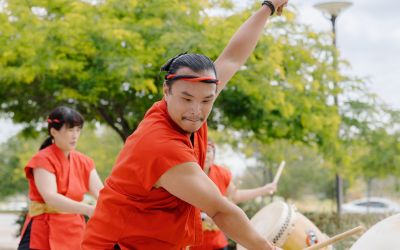
Performance by TaikoMix at the AANHPI Fund launch event
The Data Behind the Strategy
The Fund’s strategy is grounded in regional data compiled by AAPI Data and other partners. The data illuminates the disparities in education, income, housing, and access to services among AANHPI populations in the Inland Empire.
“As the first elected Asian American in the City of San Bernardino of 200 years, it says something,” said Helen Tran, Mayor of San Bernardino and AANHPI Fund Committee Member. “San Bernardino County is growing by over 120 percent for the population. That’s huge. We have to do more. We have to serve the people the right way.”
Ben Nate’s Perspective
To be sure, Ben Nate realized this.
He spent his career in public service. He now serves as State Manager at the California Department of Justice, helping shape policies and administer programs that directly respond to the needs of historically marginalized communities, including those hit hardest by the pandemic and by rising hate incidents.
Nate’s work was eye-opening, in fact, for he soon saw a troubling gap: while AANHPI communities across the Inland Empire were growing—and contributing—in significant ways, there were too few organizations focused specifically on serving them.
“When it came time to administer grants related to anti-Asian hate during the pandemic, we realized we didn’t have enough local nonprofits in place,” Nate said. “That told me something important: our region needs to expand its capacity to serve the needs of this community.
“And we need to do it in a way that reflects who we are and what our families need,” he added.
Community Growth and Urgent Needs
Recently, new research from AAPI Data proved to be valuable. Clarielisa Campo, PhD Student and AAPI Graduate Student Researcher at UC Riverside, present information from a recently released report, “One In Ten: The State of AANHPIs in the Inland Empire.”
The report revealed that AANHPI communities are experiencing rapid growth in the Inland Empire. One in 10 residents now identifies as AANHPI, with Asian American populations
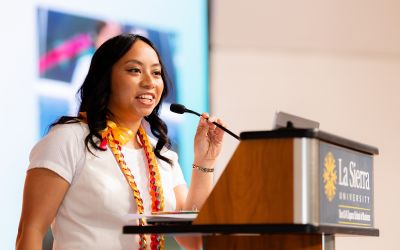
Clarielisa Ocampo
increasing by more than 200 percent in Riverside County and Native Hawaiian and Pacific Islander populations nearly tripling since 2000.
These trends highlight a critical need for culturally responsive services and equitable investment. Using this data, the AANHPI Fund will focus its grantmaking on the community’s most pressing needs—from healthcare and education to economic mobility and nonprofit capacity.
Barriers to Access
Nate also notes several stumbling blocks that prevent access to resources. For example, first-generation families often encounter language challenges when navigating public systems.
“Sometimes our kids are doing translation at 7 or 8 years old,” he said. “Your family’s well-being is at risk, and you’re explaining, ‘Mom, this redetermination letter says you have to show your taxes.’”
Elsewhere, students with high academic potential may have received full scholarships to top-tier schools, yet they cannot attend because their families are unable to afford the room and board, or even a plane ticket or books.
Additionally, small business owners, many of whom are the backbone of their communities, often find themselves one setback away from financial hardship.
“Our community is hardworking,” Nate added. “We just want to give them a little bit of resources to help them. In our community, we say, ‘a rising tide lifts all boats.’”
Learn more and support the fund: iegives.org/funds/aanhpifund
This article originally appeared in the Press-Enterprise, May 2025.
Stay up-to-date on all the good work we’re doing through the power of philanthropy. Sign up for our eNewsletter, Philanthropy Matters, today.
